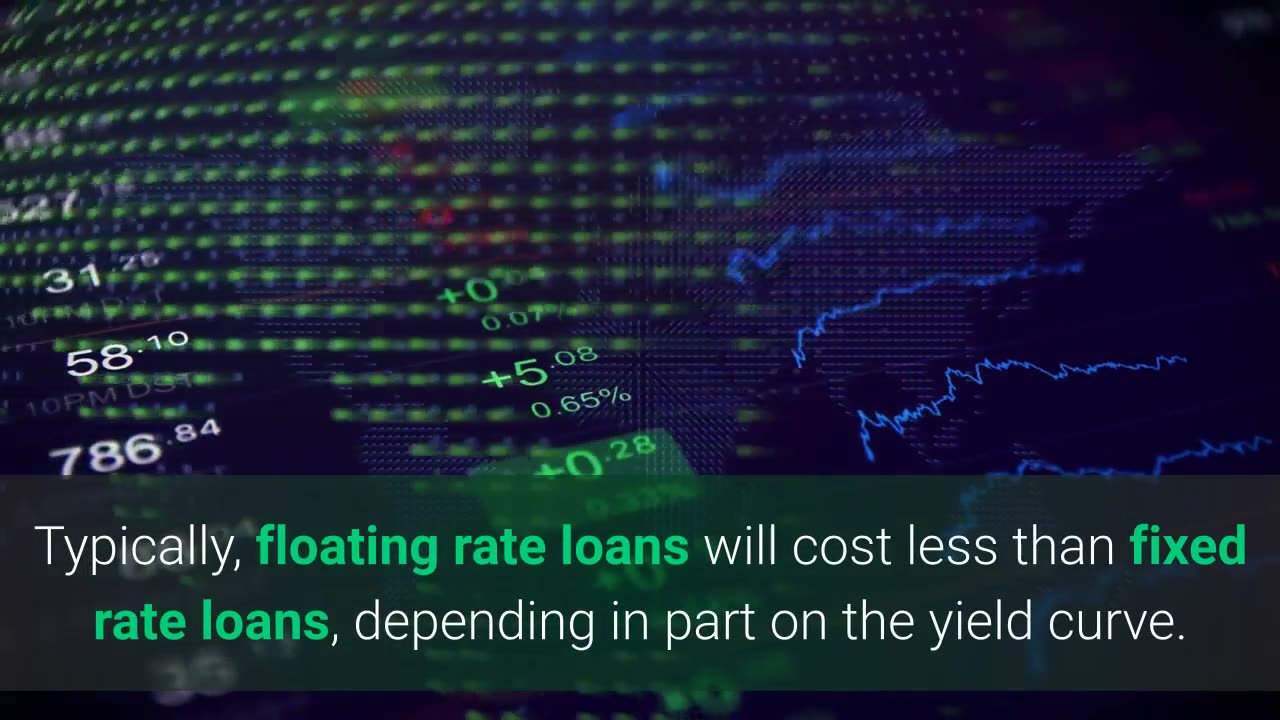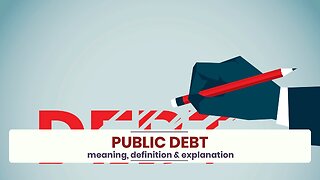Premium Only Content

What is FLOATING INTEREST RATE?
✪✪✪✪✪
http://www.theaudiopedia.com
✪✪✪✪✪
What does FLOATING INTEREST RATE mean? FLOATING INTEREST RATE meaning - FLOATING INTEREST RATE definition - FLOATING INTEREST RATE explanation. What is the meaning of FLOATING INTEREST RATE? What is the definition of FLOATING INTEREST RATE? What does FLOATING INTEREST RATE stand for? What is FLOATING INTEREST RATE meaning? What is FLOATING INTEREST RATE definition?
A floating interest rate, also known as a variable or adjustable rate, refers to any type of debt instrument, such as a loan, bond, mortgage, or credit, that does not have a fixed rate of interest over the life of the instrument.
Floating interest rates typically change based on a reference rate (a benchmark of any financial factor, such as the Consumer Price Index). One of the most common reference rates to use as the basis for applying floating interest rates is the London Inter-bank Offered Rate, or LIBOR (the rates at which large banks lend to each other).
The rate for such debt will usually be referred to as a spread or margin over the base rate: for example, a five-year loan may be priced at the six-month LIBOR + 2.50%. At the end of each six-month period, the rate for the following period will be based on the LIBOR at that point (the reset date), plus the spread. The basis will be agreed between the borrower and lender, but 1, 3, 6 or 12 month money market rates are commonly used for commercial loans.
Typically, floating rate loans will cost less than fixed rate loans, depending in part on the yield curve. In return for paying a lower loan rate, the borrower takes the interest rate risk: the risk that rates will go up in future. In cases where the yield curve is inverted, the cost of borrowing at floating rates may actually be higher; in most cases, however, lenders require higher rates for longer-term fixed-rate loans, because they are bearing the interest rate risk (risking that the rate will go up, and they will get lower interest income than they would otherwise have had).
Certain types of floating rate loans, particularly mortgages, may have other special features such as interest rate caps, or limits on the maximum interest rate or maximum change in the interest rate that is allowable.
In business and finance, a floating rate loan (or a variable or adjustable rate loan) refers to a loan with a floating interest rate. The total rate paid by the customer "floats" in relation to some base rate, to which a spread or margin is added (or more rarely, subtracted). The term of the loan may be substantially longer than the basis from which the floating rate loan is priced; for example, a 25-year mortgage may be priced off the 6-month prime lending rate.
Floating rate loans are common in the banking industry and for large corporate customers. A floating rate mortgage is a mortgage with a floating rate, as opposed to a fixed rate loan.
In many countries, floating rate loans and mortgages are predominant. They may be referred to by different names, such as an adjustable rate mortgage in the United States. In some countries, there may be no special name for this type of loan or mortgage, as floating rate lending may be the norm. For example, in Canada substantially all mortgages are floating rate mortgages; borrowers may choose to "fix" the interest rate for any period between six months and ten years, although the actual term of the loan may be 25 years or more.
Floating rate loans are sometimes referred to as bullet loans, although they are distinct concepts. In a bullet loan, a large payment (the "bullet" or "balloon") is payable at the end of the loan, as opposed to a capital and interest loan, where the payment pattern incorporates level payments throughout the loan,each containing an element of capital, and no bullet payment at the end.A floating rate loan therefore may or may not incorporate a bullet payment.
-
 1:41
1:41
The Audiopedia
1 year agoWhat is PUBLIC DEBT?
53 -
 LIVE
LIVE
SpartakusLIVE
6 hours ago#1 Birthday Boy Celebrates with MASSIVE and HUGE 4.8-Hour Stream
315 watching -
 55:54
55:54
Man in America
8 hours agoFrom Oil Barons to Pill Pushers: The Rockefeller War on Health w/ Jeff Adam
36.3K3 -
 3:02:18
3:02:18
Barry Cunningham
5 hours agoBREAKING NEWS: PRESIDENT TRUMP THIS INSANITY MUST END NOW!
82.9K153 -

StevieTLIVE
4 hours agoWednesday Warzone Solo HYPE #1 Mullet on Rumble
29.6K -
 5:58
5:58
Mrgunsngear
6 hours ago $2.88 earnedBreaking: The New Republican Party Chairman Is Anti 2nd Amendment
23.2K8 -
 2:28:35
2:28:35
Geeks + Gamers
5 hours agoGeeks+Gamers Play- MARIO KART WORLD
24.6K -
![(8/27/2025) | SG Sits Down Again w/ Sam Anthony of [Your]News: Progress Reports on Securing "We The People" Citizen Journalism](https://1a-1791.com/video/fww1/d1/s8/6/G/L/3/c/GL3cz.0kob.1.jpg) 29:34
29:34
QNewsPatriot
5 hours ago(8/27/2025) | SG Sits Down Again w/ Sam Anthony of [Your]News: Progress Reports on Securing "We The People" Citizen Journalism
18.5K2 -
 25:12
25:12
Jasmin Laine
10 hours agoDanielle Smith’s EPIC Mic Drop Fact Check Leaves Crowd FROZEN—Poilievre FINISHES the Job
22.3K23 -
 11:33:26
11:33:26
ZWOGs
14 hours ago🔴LIVE IN 1440p! - SoT w/ Pudge & SBL, Ranch Sim w/ Maam & MadHouse, Warzone & More - Come Hang Out!
12.5K